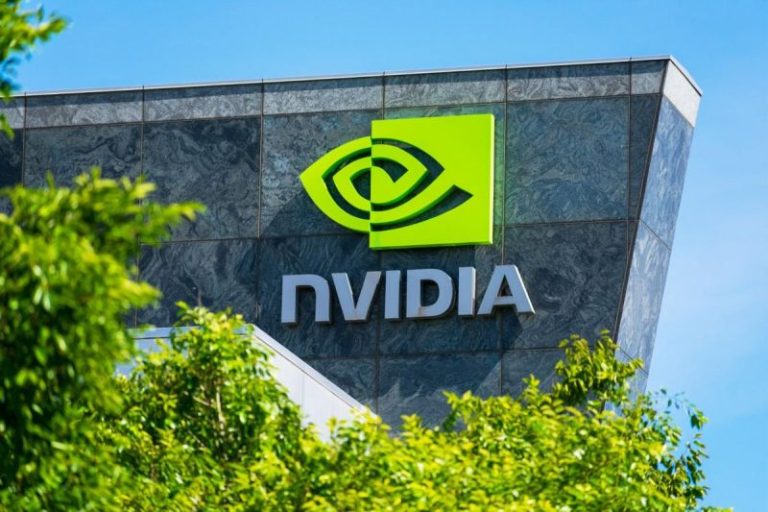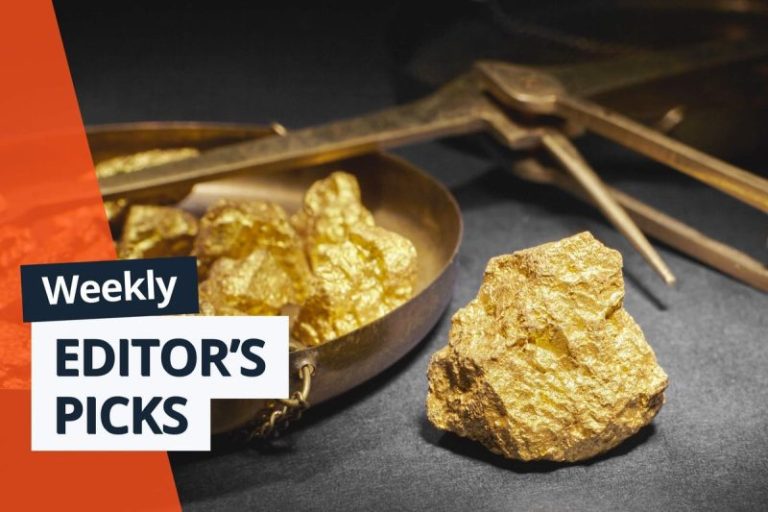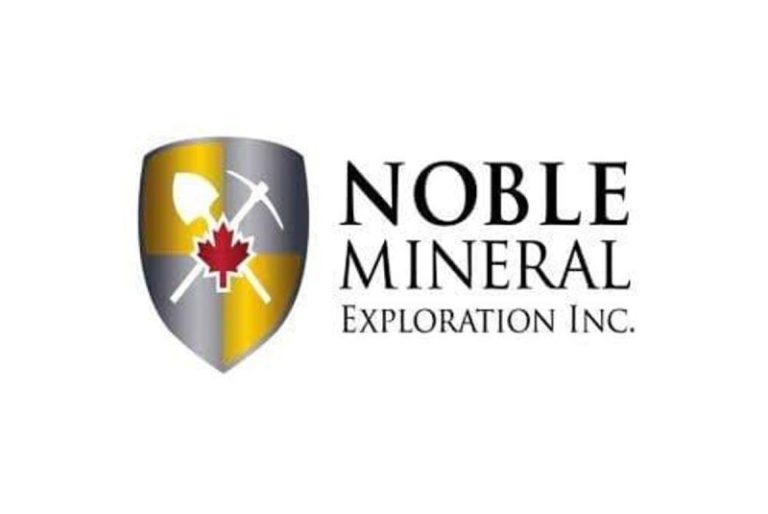Q3 2025 Quarter Highlights
- Record Q3 2025 production of 9,165 Gold Equivalent Ounces (GEOs)
- Q3 2025 sales of 7,709 GEOs
- Q3 Operating income of US$14.2M; Net Income of US$1.3M after US$6.4M of Exploration costs
- Consolidated cash costs of $1,500 per GEO sold and consolidated all-in sustaining costs (‘AISC’) of $1,825 for Q3 2025
- US$34.6M in cash, 1,688 unsold gold ounces, working capital of US$46.7M and no debt
- The Company is on track to achieve its annual production guidance of 31,000 to 41,000 GEOs, annual cash cost of $1,800-1,900 per GEO sold and AISC of $1,950-2,100 per GEO sold for 2025
Heliostar Metals Ltd. (TSXV: HSTR,OTC:HSTXF) (OTCQX: HSTXF) (FSE: RGG1) (‘Heliostar’ or the ‘Company’) today reported unaudited financial results for the three months ended September 30, 2025 (‘Q3 2025’), which corresponds to the second quarter of Heliostar’s fiscal reporting year 2025. Results are presented in US dollars, unless stated.
Heliostar CEO, Charles Funk, commented, ‘In Q3, Heliostar continued to generate strong cash flow from our operating mines. We grew production and strengthened our capital position while significantly reinvesting across the portfolio. In Q3, this included significant drill programs at Ana Paula and La Colorada, economic studies for La Colorada and Ana Paula as well as permissions and preparations to restart mining at San Agustin. Our strong cash balance has allowed us to internally fund this restart. This gives us a clear path to generate cash flow from operations which will fund the ongoing development of Ana Paula with little-to-no equity dilution.’
‘Our recently released PEA for Ana Paula shows that the additional 101,000 ounces per year of production at an all-in sustaining cost of just $1,011/oz will be a significant cash flow generator for Heliostar, supporting growth through the next decade. The cash generated by being a producer in the current gold price environment affords us opportunities to accelerate our plan to become a mid-tier producer with 500,000 ounces per year before the end of the decade.’
Third Quarter 2025 Quarterly Conference Call
Heliostar will host a quarterly conference call on Monday, November 24, 2025, at 2:00 PM, Eastern Time/11:00 AM Pacific Time. The call will provide a corporate update following the release of our financial and operating results for the third quarter of 2025.
Please use the link here to register for the call or visit the Company website at www.heliostarmetals.com.
Q3 2025 Operational and Financial Highlights
Total gold production of 9,165 gold equivalent ounces (‘GEO’) (8,949 gold ounces) in Q3 2025. Gold production was realized from mining the Junkyard Stockpile at the La Colorada mine, as well as re-leaching the previously stacked ore at the La Colorada and the San Agustin mines. Production year-to-date January – September 2025 (‘YTD’) remains on track to achieve the lower half of the 2025 guidance issued by the Company on February 4, 2025, of 31,000-41,000 GEOs.
Total Cash Cost of $1,500 per GEO produced in Q3 2025. The combined YTD cash cost (see ‘Non-IFRS Measures’) is $1,405 per GEO.
Total AISC of $1,825 per GEO sold in Q3 2025. The increase from Q2 reflects a change in calculation methodology to include corporate General and Administrative (‘G&A’) and stock based compensation costs, expensed exploration incurred in the period, and remove previously-included by-product credits. The higher AISC is also a function of fewer GEOs sold in the period compared to Q2 2025. The consolidated YTD AISC (see ‘Non-IFRS Measures) is $1,799 per GEO sold.
Total Cash Costs and AISC are below the 2025 guidance range due to higher production relative to the budget. The Company anticipates materially higher costs in Q4 due to one-off sustainable capital investment incurred to restart mining from the Corner Area. These expenses are anticipated to return to lower rates in early 2026 at San Agustin.
Mine Operating Earnings of $14.2 million in Q3 2025. The Company continued to report strong results in Q3 2025 with steady operating unit costs and operating margin benefiting from selling into a rising gold market. Mine operating earnings YTD 2025 are $40 million.
Net income attributable to shareholders of $1.3 million, or $0.01 per share, for Q3 2025. Net income of $1.3 million ($0.01 per share) for Q3 2025 compared to a net income attributable to shareholders of $1.9 million ($0.01 per share) for Q2 2025. This was due to the increased exploration expense as drilling activities at Ana Paula ramped up and lower GEO sales volume in the quarter.
Strengthened financial position and liquidity: On September 30, 2025, the Company had cash of $34.6 million and working capital (defined as current assets less current liabilities) of $46.7 million. The cash position decreased compared to Q2 due to the increase in exploration spending. As of September 30, 2025, the Company had 1,688 unsold ounces (worth approx. $6.9M at current spot gold prices) and no debt.
Maintained stable production at La Colorada mine. The mining of new ore restarted at the Junkyard Stockpile in January 2025. Production from the Junkyard Stockpile was steady during Q3 2025, with operating costs as expected, grade in line with the reserve model and ore tonnes reconciling slightly higher than expected. Production YTD 2025 was 13,328 GEOs (12,883 gold ounces). Ore feed from the Junkyard Stockpile is planned to continue into 2026, with other historical stockpiles identified to provide additional material to be crushed and stacked on the leach pad thereafter. Further, subject to receiving certain land access approvals, the Company intends to expand the Veta Madre pit to exploit its 43k ounces of gold reserves. In addition, drilling is ongoing at Veta Madre Plus with the aim of adding this additional Indicated material into a near-term mine plan in short order.
Restart of mining at San Agustin. Preparation work to commence mining is underway at San Agustin from the Corner area following the receipt of all necessary approvals to restart mining in Q3. The Company anticipates stacking first ore in December with production from the Corner starting near year end and continuing into 2027. Recoverable reserves at the Corner are estimated at 44.5k ounces of gold.
Strong economics and continued drilling success at Ana Paula drive additional investment. On November 6, 2025, the Company announced the results of a Preliminary Economic Study (PEA) for Ana Paula. These showed attractive economics at a conservative gold price driven by production of 101koz/yr after ramp up at an average all-in sustaining cost of $1,011/oz. On the back of this positive outcome, the Company has announced its intention to complete the underground decline access to the deposit in 2026. Technical and regulatory programs are being advanced in parallel and will continue through 2026 to complete a bankable feasibility study in early 2027.
Preparation of updated technical reports. The Company announced the results of an updated technical report for the La Colorada Mine on October 17, 2025, and is concluding an updated prefeasibility study (‘PFS’) for the Cerro del Gallo Project. The Company plans to release the results of the Cerro del Gallo PFS in Q4 2025 and continues to advance the Ana Paula Project feasibility study.
Operational and Financial Results
Results are reported for the three months ended September 30, 2025, which corresponds to the second quarter of Heliostar’s fiscal reporting year 2026.
A summary of the Company’s consolidated operational and financial results for the reporting period is presented below:
| Key Performance Metrics |
Q3 2025 |
Q3 2024 |
| Operational |
|
|
| Gold produced |
8,949 |
0 |
| Gold equivalent ounces (‘GEOs’) produced |
9,165 |
0 |
| Gold sold |
7,552 |
0 |
| Gold equivalent ounces (‘GEOs’) sold |
7,709 |
0 |
| Cash cost1 per GEOs sold |
$1,500 |
0 |
| All-in sustaining costs1 (‘AISC’) per GEOs sold |
$1,825 |
0 |
| Financial (in ‘000s) |
|
|
| Revenues |
$26,765 |
0 |
| Mine operating earnings |
$14,243 |
0 |
| Exploration expenses |
$6,411 |
$1,865 |
| Net income (loss) |
$1,256 |
($3,770) |
| Cash |
$34,576 |
$720 |
| Total assets |
$129,881 |
$21,273 |
| Working Capital |
$46,700 |
($4,393) |
- Non-IFRS measure. Refer to the ‘Non-IFRS Measures’ section of this news release.
Operational Review
Consolidated Production and Costs
Q3 2025 was the Company’s fourth reporting period with metals production. The Company had no production in Q3 2024.
Production of 9,165 GEOs (8,949 gold ounces) for Q3 2025 was reported from the La Colorada mine and the San Agustin mine. In late Q2, the El Castillo mine ceased production and reclamation commenced at the start of Q3. The combined YTD 2025 production of 25,642 GEOs (24,988 gold ounces) is consistent with the 2025 guidance issued by the Company. Heliostar is on track to achieve the lower half of the 2025 production guidance of 31,000-41,000 GEOs with the several week delay in being able to restart San Agustin pushing production from that asset into 2026.
The combined cash costs for the producing operations were $1,500 per GEO sold, and the consolidated AISC was $1,825 per GEO sold. The combined cash costs and AISC are currently in line with the 2025 guidance issued by the Company. Full-year results are expected to be within the guidance range of $1,800-$1,950/GEO for Cash Costs and $1,950-$2,100/GEO for AISC.
La Colorada Mine
Operating results for Q3 2025 were as follows:
| La Colorada |
|
Q3 2025 |
YTD 2025 |
| Gold produced |
oz |
5,311 |
12,883 |
| Gold equivalent ounces (‘GEOs’) produced |
GEO |
5,479 |
13,328 |
| Gold sold |
oz |
4,122 |
10,865 |
| Gold equivalent ounces (‘GEOs’) sold |
GEO |
4,229 |
11,205 |
| Cash cost1 |
$/GEO sold |
1,592 |
1,354 |
| All-in sustaining costs1 (‘AISC’) |
$/GEO sold |
1,648 |
1,439 |
In January 2025, mining of new ore restarted at the Junkyard Stockpile by the Company, alongside re-leach activities of ore stacked by previous operators.
During the reporting period, the La Colorada mine produced 5,479 GEOs (5,311 gold ounces). Total revenues of $14.7 million were reported from sales of 4,229 GEOs. The increase in production compared to Q2 was driven by higher grades placed on the leach pad and the first full quarter of solution flow from the leach pad after restart of operations. Production from the leach pad has increased steadily throughout the year and continues to meet all expected parameters.
For the reporting period, cash costs were $1,592 per GEO ($1,354 per GEO YTD 2025). AISC was $1,648 per GEO ($1,439 per GEO YTD 2025), on track to be at the lower end or below 2025 AISC guidance of $1,850-$1,975/GEO.
The Company plans to continue mining of the Junkyard Stockpile through 2025 and into 2026, with other historical stockpiles identified to provide additional, continued feed to the crushers thereafter. Further, subject to receiving certain land access approvals, the Company intends to expand the Veta Madre pit to exploit 43k ounces of gold reserve, which will be timed sequentially with the ore feeds from the historical stockpiles. Drilling is ongoing to define the mineralization at Veta Madre Plus, with the aim of bringing it into the near-term mine plan in short order.
Subsequent to the reporting period, Heliostar released the results of an updated technical report for La Colorada showing and increased resource and a lower capital expenditure. This showed a mine with a six-year life producing 286k gold ounces at an AISC of $1,626 per GEO. This resulted in upside case economics of an NPV5% of $243.3M and an IRR of 168.4% at a $3,500/oz gold price. For more details, see the press release here.
San Agustin Mine
Operating results for Q3 2025 were as follows:
| San Agustin |
|
Q3 2025 |
YTD 2025 |
| Gold produced |
oz |
3,638 |
11,613 |
| Gold equivalent ounces (‘GEOs’) produced |
GEO |
3,686 |
11,815 |
| Gold sold |
oz |
3,430 |
12,182 |
| Gold equivalent ounces (‘GEOs’) sold |
GEO |
3,480 |
12,373 |
| Cash cost1 |
$/GEO sold |
$ 1,389 |
1,437 |
| All-in sustaining costs1 (‘AISC’) |
$/GEO sold |
$ 1,587 |
1,546 |
In September 2024, the previous owners of San Agustin placed the mine under care and maintenance, with metals production continuing from the re-leaching of leach pads.
During the reporting period, the San Agustin mine produced 3,686 GEOs (3,638 gold ounces). Total revenues of $12.1 million were reported from sales of 3,480 GEOs. Re-leaching performance continued well above expectations in the quarter as a result of enhanced recovery initiatives conducted earlier in the year. Gold production through the first nine months of the year exceeded full-year 2025 guidance for re-leaching from the mine.
For the reporting period, cash costs were $1,389 per GEO ($1,437 per GEO YTD 2025). AISC was $1,587 per GEO ($1,546 per GEO YTD 2025), YTD on track to achieve full year AISC guidance of $1,700-$1,850/GEO.
During the quarter, the Company completed all regulatory requirements to enable the restart of mining at San Agustin from the Corner area (see News Release dated July 22, 2025). Work to commence mining of the Corner Area cut back was undertaken subsequently, including moving road access, a power line and contractor selection. First ore is on track to be stacked on the leach pad in the coming weeks. Initial gold production from this new material is expected to start near year end 2025 and continue into 2027. Recoverable reserves at the Corner are estimated at 44.5k ounces of gold.
Ana Paula Project
Development and Exploration expenditures at the flagship Ana Paula Project were $3.9 million in Q3 2025 ($1.8 million in Q3 2024).
During Q3 2025, the Company progressed its ongoing 15,000 metre drilling program at Ana Paula with the objective of delivering mineral reserves to support a 10-year life of mine in the Feasibility Study planned to be released in 1H 2027. On October 6, 2025, the Company announced results from the infill drill program (including 88.1m metres at 8.82 g/t) and the addition of a third rig. Subsequent to quarter end on November 18, 2025, the Company announced additional infill results of 83.2m of 17.4 g/t and 70.7m of 9.38 g/t. The drill program continues to successfully define wide zones of high grade mineralization.
Subsequent to the reporting period, Heliostar released the results of a Preliminary Economic Study (PEA) for Ana Paula showing strong economics at a conservative gold price. This showed a mine with a nine year life producing 101koz/yr after ramp up at an AISC of $1,011/oz. This resulted in upside case economics of an NPV5% of $1,012M, an IRR of 51.3% and average annual after-tax free cash flow of $168M at a $3,800/oz gold price. For more details, see the press release here.
Cerro del Gallo Project
During Q3 2025, the Company conducted advanced study work towards releasing a prefeasibility study for the Cerro del Gallo project based on information collected by previous owners. This work includes updated resources and reserves based on an updated gold price as well as better definition of transition material and an optimized mining and stacking plan. The results of this study are planned to be released in the coming weeks. All major environmental and other permits will need to be obtained before an investment decision can be considered by the Company.
Funding Overview
In the three months ended September 30, 2025, 5,916,250 warrants and 766,250 stock options were exercised for total proceeds of $1.5 million and 1,299,579 RSUs were converted.
As of September 30, 2025, the Company had no debt.
Change of Year End
The Company has changed its financial year-end from March 31 of each year to December 31 of each year. The next financial year-end of the Company will occur on December 31, 2025, for the nine months then ended.
Non-IFRS Measures. This news release refers to certain financial measures, such as all-in-sustaining costs, which are not measures recognized under IFRS and do not have a standardized meaning prescribed by IFRS. These measures may differ from those made by other companies and, accordingly, may not be comparable to such measures as reported by other companies. These measures have been derived from the Company’s financial statements because the Company believes that they are of assistance in understanding the results of operations and its financial position. Certain additional disclosures for these specified financial measures have been incorporated by reference and can be found in the Company’s MD&A for Q3 2025, available on SEDAR+.
Cash costs. The Company uses cash costs per gold equivalent ounce sold to monitor its operating performance internally. The most directly comparable measure prepared in accordance with IFRS is cost of sales. The Company believes this measure provides investors and analysts with useful information about its underlying cash costs of operations. The Company also believes it is a relevant metric used to understand its operating profitability and ability to generate cash flow. Cash costs are measures developed by metals companies in an effort to provide a comparable standard; however, there can be no assurance that the Company’s reporting of these non-GAAP financial measures are similar to those reported by other mining companies. They are widely reported in the metals mining industry as a benchmark for performance, but do not have a standardized meaning and are disclosed in addition to IFRS measures. Cash costs include production costs, refinery and transportation costs and extraordinary mining duty. Cash costs exclude non-cash depreciation and depletion and site share-based compensation. Production costs include mining, crushing, processing, and direct overhead at the operation sites.
AISC. AISC more fully defines the total costs associated with producing precious metals. The AISC is calculated based on guidelines published by the World Gold Council (WGC), which were first issued in 2013. In light of new accounting standards and to support further consistency of application, the WGC published an updated Guidance Note in 2018. Other companies may calculate this measure differently because of differences in underlying principles and policies applied. Differences may also arise due to a different definition of sustaining versus growth capital. Note that in respect of AISC metrics within the technical reports, because such economics are disclosed at the project level, corporate general and administrative expenses were not included in the AISC calculations. AISC per GEO includes mining, processing, direct overhead, reclamation and sustaining capital.
Statement of Qualified Persons
Gregg Bush, P.Eng., Mike Gingles, and Stewart Harris, P. Geo., Qualified Persons, as such term is defined by National Instrument 43-101 – Standards of Disclosure for Mineral Projects, have reviewed the scientific and technical information that forms the basis for this news release and have approved the disclosure herein. Mr. Bush is employed as Chief Operating Officer of the Company, Mr. Gingles is employed as Vice President of Corporate Development, and Mr. Harris is employed as Exploration Manager.
About Heliostar Metals Ltd.
Heliostar aims to grow to become a mid-tier gold producer. The Company is focused on increasing production and developing new resources at the La Colorada and San Agustin mines in Mexico, and on developing the 100% owned Ana Paula Project in Guerrero, Mexico.
FOR ADDITIONAL INFORMATION, PLEASE CONTACT:
Charles Funk
President and Chief Executive Officer
Heliostar Metals Limited
Email: charles.funk@heliostarmetals.com
Phone: +1 844-753-0045 |
Rob Grey
Investor Relations Manager
Heliostar Metals Limited
Email: rob.grey@heliostarmetals.com
Phone: +1 844-753-0045 |
Neither TSX Venture Exchange nor its Regulation Services Provider (as that term is defined in the policies of the TSX Venture Exchange) accepts responsibility for the adequacy or accuracy of this release.
Cautionary Statement Regarding Forward-Looking Information
This news release includes certain ‘Forward-Looking Statements’ within the meaning of the United States Private Securities Litigation Reform Act of 1995 and ‘forward-looking information’ under applicable Canadian securities laws. When used in this news release, the words ‘anticipate’, ‘believe’, ‘estimate’, ‘expect’, ‘target’, ‘plan’, ‘forecast’, ‘may’, ‘would’, ‘could’, ‘schedule’ and similar words or expressions, identify forward-looking statements or information. These forward-looking statements or information relate to, among other things: the Company’s goal of becoming a mid-tier producer, the mine performance, production plans and the free cashflow generation from our operating mines, all profits generated from operations to be reinvested directly into our Companies growth and this reinvestment will focus on expanding production and growing resources across our portfolio.
Forward-looking statements and forward-looking information relating to the terms and completion of the Facility, any future mineral production, liquidity, and future exploration plans are based on management’s reasonable assumptions, estimates, expectations, analyses and opinions, which are based on management’s experience and perception of trends, current conditions and expected developments, and other factors that management believes are relevant and reasonable in the circumstances, but which may prove to be incorrect. Assumptions have been made regarding, among other things, the receipt of necessary approvals, price of metals; no escalation in the severity of public health crises or ongoing military conflicts; costs of exploration and development; the estimated costs of development of exploration projects; and the Company’s ability to operate in a safe and effective manner and its ability to obtain financing on reasonable terms.
These statements reflect the Company’s respective current views with respect to future events and are necessarily based upon a number of other assumptions and estimates that, while considered reasonable by management, are inherently subject to significant business, economic, competitive, political and social uncertainties and contingencies. Many factors, both known and unknown, could cause actual results, performance, or achievements to be materially different from the results, performance or achievements that are or may be expressed or implied by such forward-looking statements or forward-looking information and the Company has made assumptions and estimates based on or related to many of these factors. Such factors include, without limitation: precious metals price volatility; risks associated with the conduct of the Company’s mining activities in foreign jurisdictions; regulatory, consent or permitting delays; risks relating to reliance on the Company’s management team and outside contractors; risks regarding exploration and mining activities; the Company’s inability to obtain insurance to cover all risks, on a commercially reasonable basis or at all; currency fluctuations; risks regarding the failure to generate sufficient cash flow from operations; risks relating to project financing and equity issuances; risks and unknowns inherent in all mining projects, including the inaccuracy of reserves and resources, metallurgical recoveries and capital and operating costs of such projects; contests over title to properties, particularly title to undeveloped properties; laws and regulations governing the environment, health and safety; the ability of the communities in which the Company operates to manage and cope with the implications of public health crises; the economic and financial implications of public health crises, ongoing military conflicts and general economic factors to the Company; operating or technical difficulties in connection with mining or development activities; employee relations, labour unrest or unavailability; the Company’s interactions with surrounding communities; the Company’s ability to successfully integrate acquired assets; the speculative nature of exploration and development, including the risks of diminishing quantities or grades of reserves; stock market volatility; conflicts of interest among certain directors and officers; lack of liquidity for shareholders of the Company; litigation risk; and the factors identified under the caption ‘Risk Factors’ in the Company’s public disclosure documents. Readers are cautioned against attributing undue certainty to forward-looking statements or forward-looking information. Although the Company has attempted to identify important factors that could cause actual results to differ materially, there may be other factors that cause results not to be anticipated, estimated or intended. The Company does not intend, and does not assume any obligation, to update these forward-looking statements or forward-looking information to reflect changes in assumptions or changes in circumstances or any other events affecting such statements or information, other than as required by applicable law.
To view the source version of this press release, please visit https://www.newsfilecorp.com/release/275395










